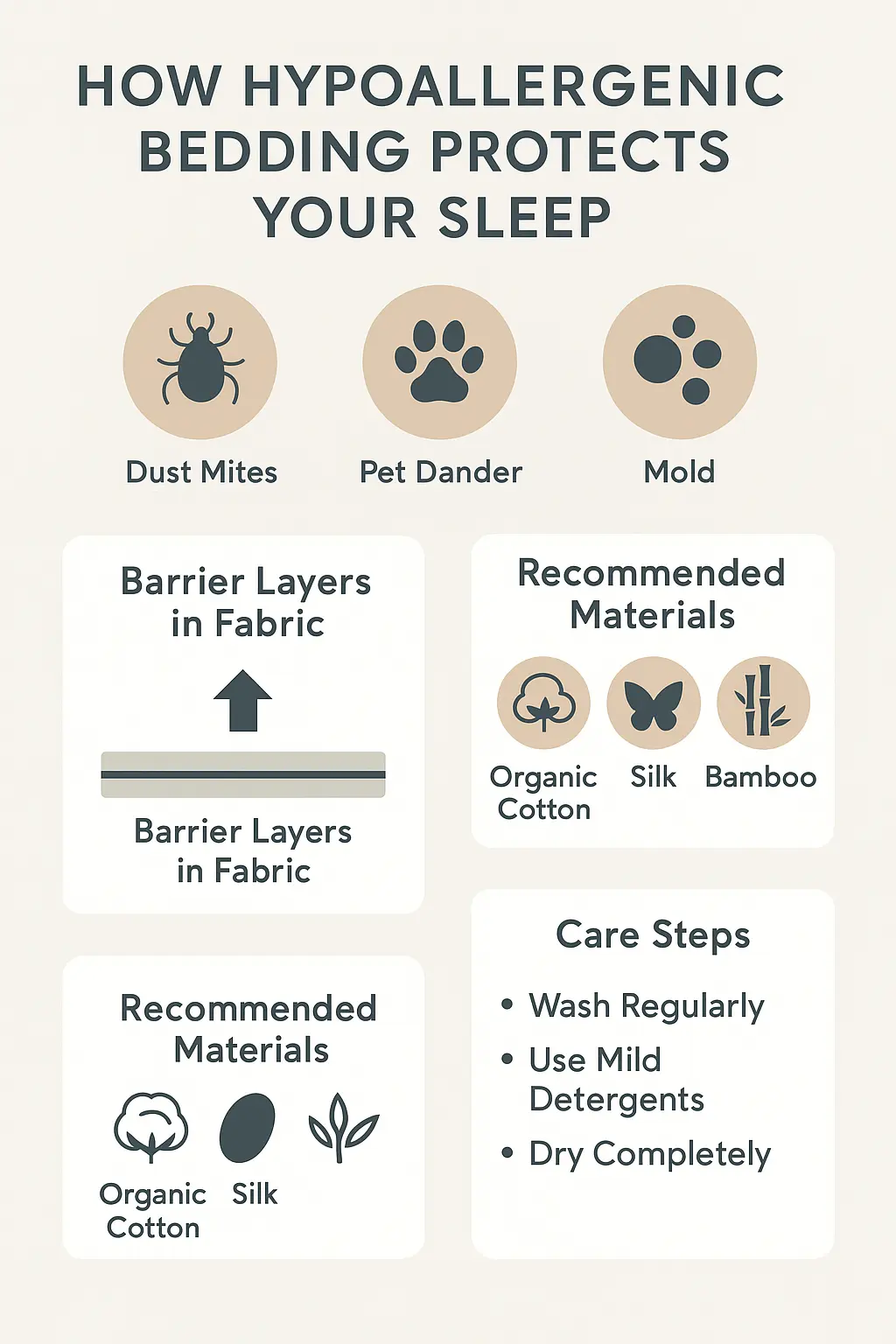Do you wake up with a stuffy nose, itchy eyes, or sneezing fits? Allergies can seriously disrupt your sleep and affect your overall well-being. The good news is, hypoallergenic bedding offers a simple and effective solution for allergy sufferers. Here’s how you can transform your bedroom into an allergy-free sanctuary and finally enjoy restful, uninterrupted sleep.
What is Hypoallergenic Bedding?
Hypoallergenic bedding is specially designed to minimize the risk of allergic reactions. It uses materials and construction methods that repel common allergens like dust mites, mold, pet dander, and pollen. This type of bedding is ideal for people with allergies, asthma, or sensitive skin.
Common Bedroom Allergens
- Dust Mites: Tiny creatures that thrive in warm, humid environments and feed on skin flakes.
- Pet Dander: Microscopic skin particles shed by cats, dogs, and other pets.
- Mold & Mildew: Fungi that grow in damp areas, sometimes even inside mattresses or pillows.
- Pollen: Can enter through open windows or cling to clothing and bedding.
How Hypoallergenic Bedding Helps
- Tightly Woven Fabrics: Prevent allergens from penetrating pillows, duvets, and mattresses.
- Synthetic Fillings: Like microfiber or polyester, which are less hospitable to dust mites than down or feathers.
- Moisture-Wicking Materials: Reduce humidity and inhibit mold growth.
- Easy to Wash: Most hypoallergenic bedding can be washed frequently at high temperatures to kill allergens.

Top Hypoallergenic Bedding Choices
- Pillow and Mattress Protectors: Act as a barrier against dust mites and allergens.
- Allergy-Friendly Pillows: Made from memory foam, latex, or tightly woven synthetic fibers.
- Hypoallergenic Comforters and Duvets: Filled with synthetic alternatives to down.
- Bamboo or Tencel Sheets: Naturally antimicrobial and moisture-wicking.
- Frequent Washing: Wash sheets and pillowcases weekly in hot water.
Extra Tips for an Allergy-Free Bedroom
- Declutter: Reduce dust-collecting items like stuffed animals and heavy curtains.
- Vacuum Regularly: Use a vacuum with a HEPA filter.
- Control Humidity: Use a dehumidifier to keep humidity below 50%.
- Keep Pets Out: Especially off the bed and out of the bedroom if possible.
Final Thoughts
Switching to hypoallergenic bedding is a simple change that can dramatically improve your sleep quality and health. Say goodbye to midnight sneezing and stuffy mornings—choose bedding that protects you from allergens and lets you wake up refreshed every day.
Ready for better sleep? Make the switch to hypoallergenic bedding and breathe easier tonight!


Leave a Reply